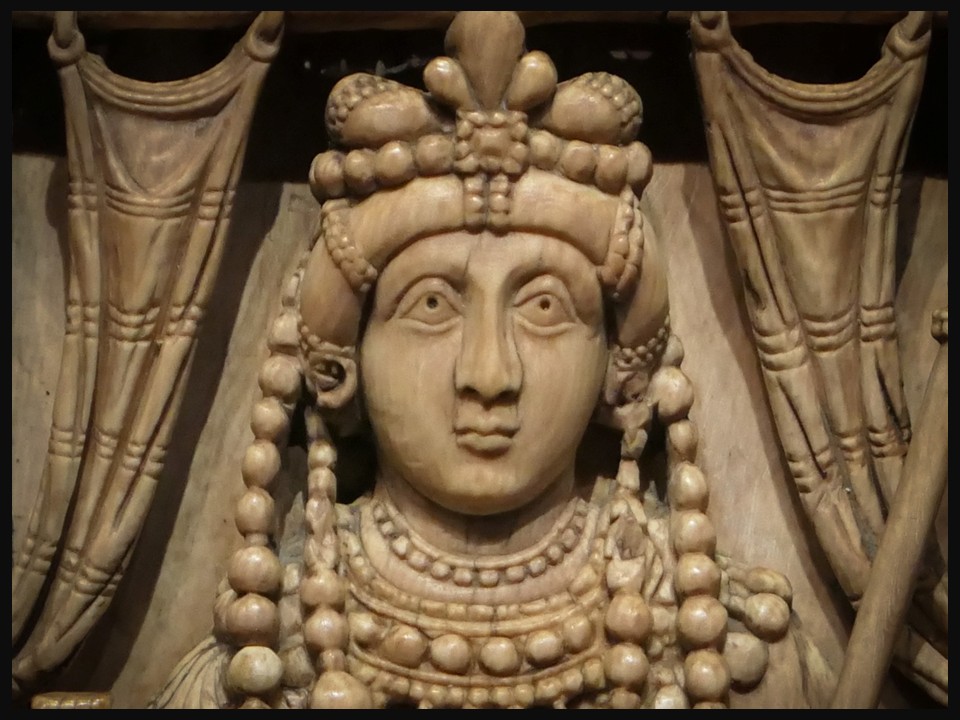
In the heart of Late Antique Constantinople, luxury art served not only as decoration but as a statement of power and identity. Among these treasures are two exquisite ivory plaques, generally attributed to portray Empress Ariadne (r. 474–515), now housed in the Bargello Museum in Florence and the Kunsthistorisches Museum in Vienna. While scholars debate their exact identification, these delicate carvings offer a rare glimpse into the artistry and political symbolism of the early Christian Byzantine court.
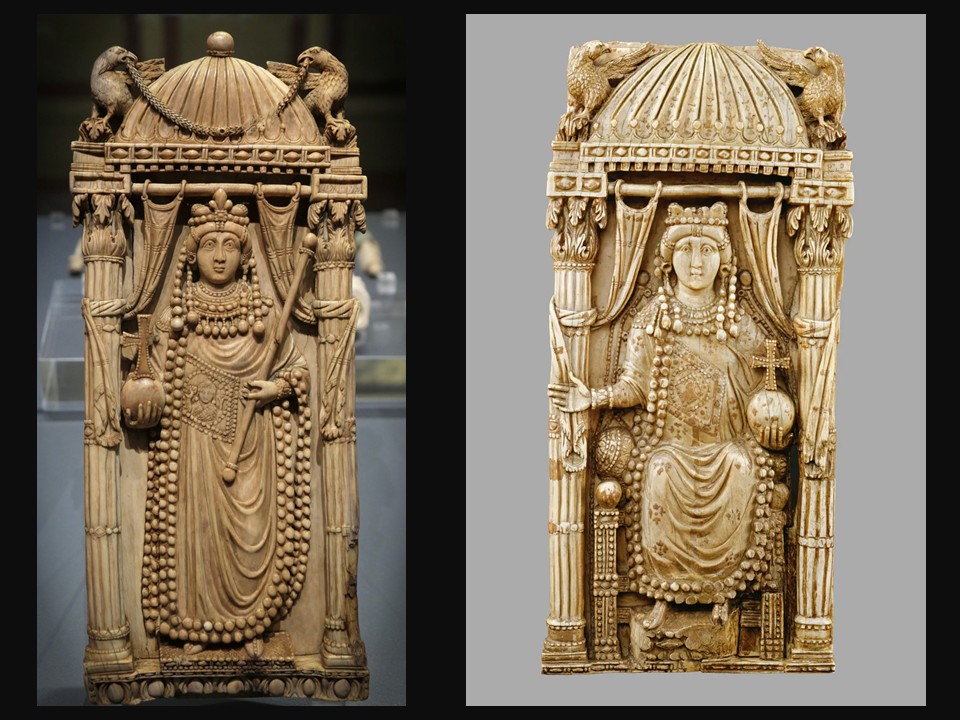
Empress Ariadne, around 500 AD, Ivory, Height: 26,5 cm,Kunsthistorisches Museum, Vienna, Austria
https://www.khm.at/en/artworks/kaiserin-ariadne-71782-1
The late 5th and early 6th centuries were a period of significant political and religious transformation. Ariadne, the daughter of Emperor Leo I and Empress Verina, became central to dynastic succession at a time when no male heir was available. Married first to Emperor Zeno, she played a mediating role during his often turbulent reign. After his death, Ariadne married Anastasios, a palace official (silentiarius) whom she helped elevate to the throne, securing imperial stability. If the ivory plaques do depict her, they present not only an image of an empress consort but also of a figure who embodied dynastic continuity and wielded real political influence in Constantinople.
The Bargello plaque, cataloged as part of a larger pentittico (five-panel composition), presents a standing female figure dressed in imperial robes and facing frontally. Executed in carved and incised ivory with traces of paint, it has been compared to major works such as the Barberini Ivory, and scholars have proposed that it may once have formed part of the same ensemble as the Vienna plaque. Stylistic affinities with consular diptychs, such as those of Aerobindus and Anastasius, suggest a date around 500 AD. While rival identifications have been proposed, the attribution to Ariadne remains the most recurrent. The ivory entered the Bargello in the 19th century through an exchange, further adding to its layered history as both a Byzantine and a modern collectible.
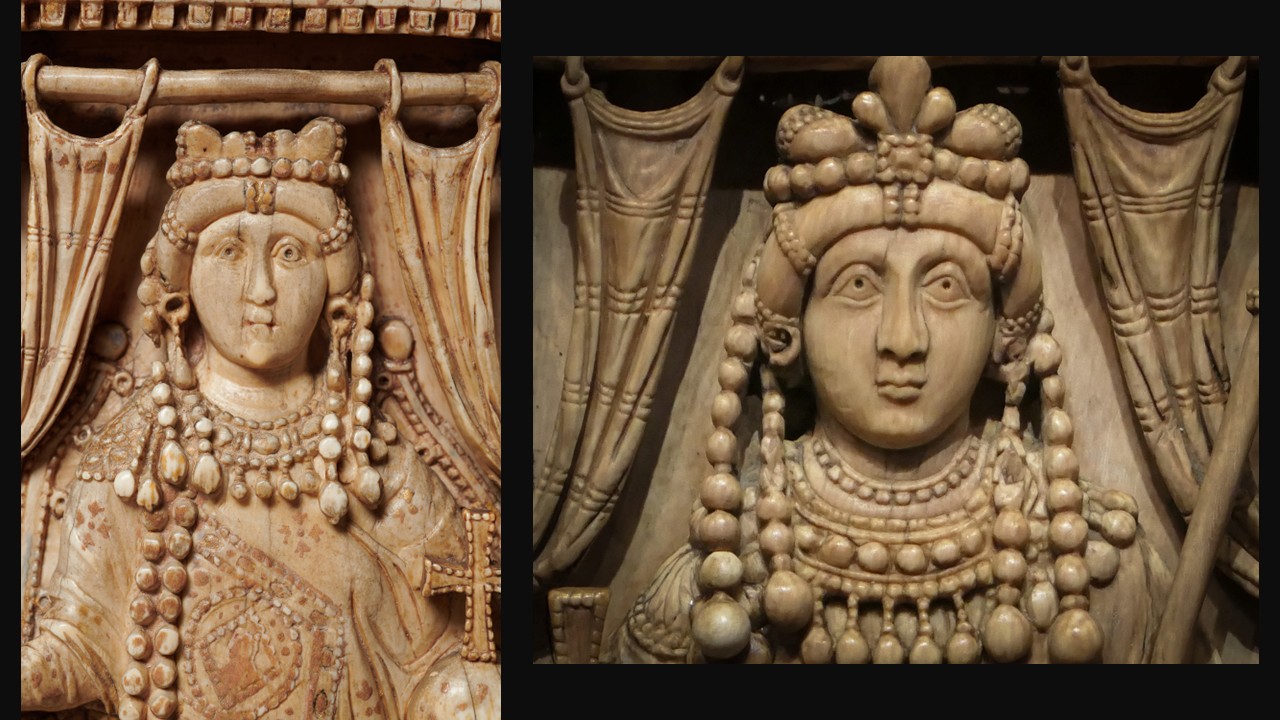
Empress Ariadne, around 500 AD, Ivory, Height: 26,5 cm,Kunsthistorisches Museum, Vienna, Austria
https://www.khm.at/en/artworks/kaiserin-ariadne-71782-1
By contrast, the Vienna plaque shows the empress enthroned beneath a shell-shaped baldachin, flanked by eagles, symbols of imperial authority. Dated to around 500 AD, the ivory portrays the ruler richly adorned, holding a sphaira topped with a cross in her left hand while raising her right in a gesture of blessing. The throne, the globe and cross, and the orant-like pose emphasize divine sanction and ceremonial majesty over individual portraiture. Classified as Early Byzantine, the plaque passed from the Riccardi collection in Florence into the Kunsthistorisches Museum, where it remains a centerpiece of the Antikensammlung.
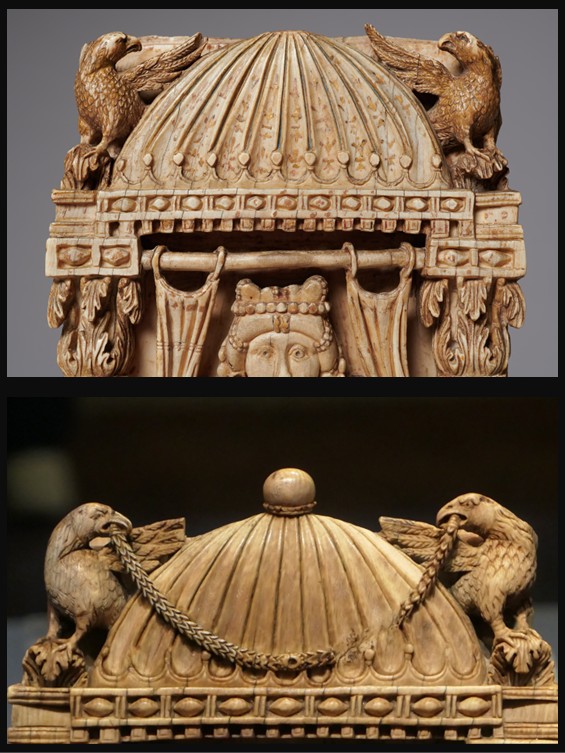
Empress Ariadne, around 500 AD, Ivory, Height: 26,5 cm,Kunsthistorisches Museum, Vienna, Austria
https://www.khm.at/en/artworks/kaiserin-ariadne-71782-1
Taken together, the two plaques, one depicting the empress standing in ceremonial presence, the other enthroned in majesty, illustrate complementary aspects of imperial power. They exemplify the Constantinopolitan fusion of classical forms with emerging Christian symbolism, and, if indeed they represent Ariadne, they also illuminate the ways in which an empress could embody both dynastic continuity and divine legitimacy during a pivotal moment in Byzantine history.
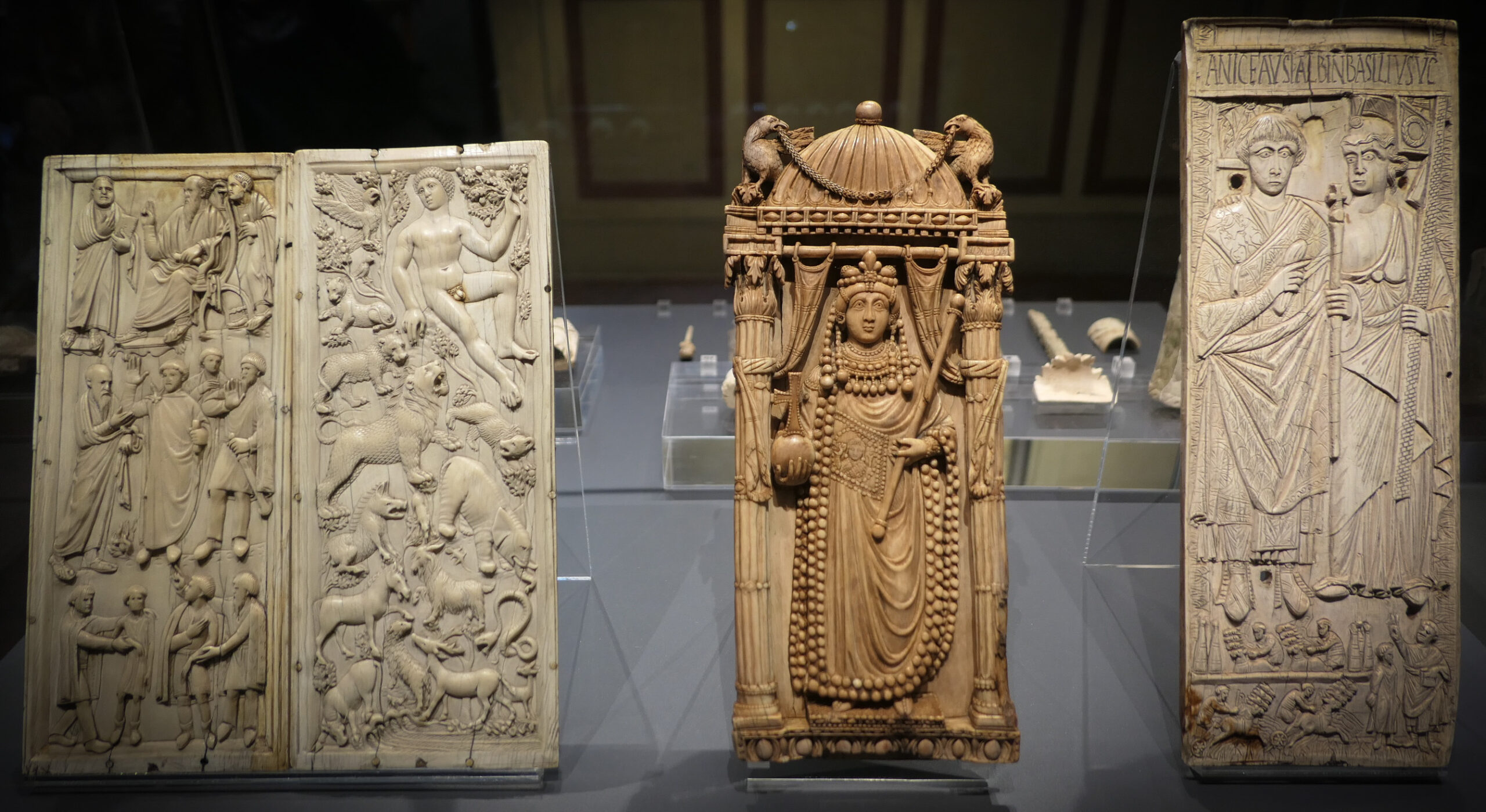
Today, the Bargello and Vienna ivory plaques continue to captivate scholars and visitors alike, not only for their exquisite craftsmanship but also for the historical questions they raise. Whether or not they truly portray Ariadne, they stand as rare survivals of Constantinopolitan ivory carving, embodying the fusion of imperial image-making and Christian symbolism. Through them, we glimpse both the artistry of a vibrant court and the enduring allure of an empress whose legacy shaped the transition of power at a crucial moment in Byzantine history.
For a Student Activity, please… Check HERE!
Bibliography: https://link.springer.com/chapter/10.1007/978-1-137-04469-3_4 and https://catalogo.beniculturali.it/detail/HistoricOrArtisticProperty/0901395336 and https://www.khm.at/en/artworks/kaiserin-ariadne-71782-1